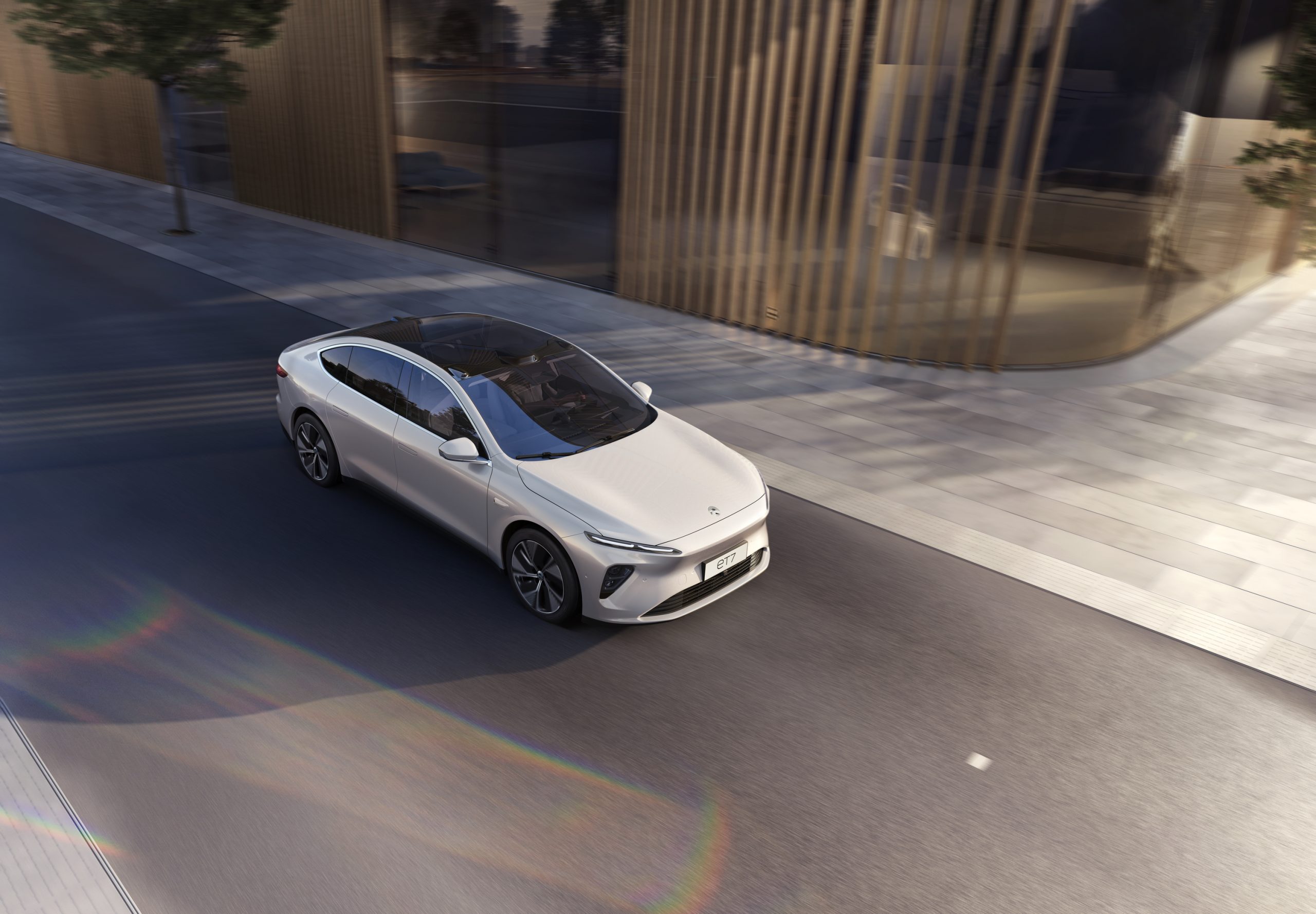The answer is: ET7’s product strength is somewhat disappointing, with no revolutionary changes.
First of all, as the flagship pure electric sedan currently released, ET7 undoubtedly occupies a leadership position and fully embodies the high-end new energy brand image of NIO.
Why is ET7’s product strength somewhat disappointing? Because this time, NIO ET7 is a new car developed based on the new generation NT2 platform, which is different from previous products. However, the introduction of the new platform in this press conference was relatively limited, and no revolutionary changes in the new platform were found.
The following is a specific analysis of several aspects of the vehicle, explaining why it is somewhat disappointing.
Lack of high-end and technological sense in exterior design
It can be said that there are no shortcomings in the design of this shape, especially the design of the front face, which breaks away from the original NIO family X-bar structure and has a more concise and avant-garde meaning.
However, overall, it is not outstanding and does not reflect the high-end sense of a leading smart pure electric sedan.
ET7 exhibited a preview version of the car at previous auto shows. The production version of the car released by NIO this time is quite different from the preview version, as shown below:
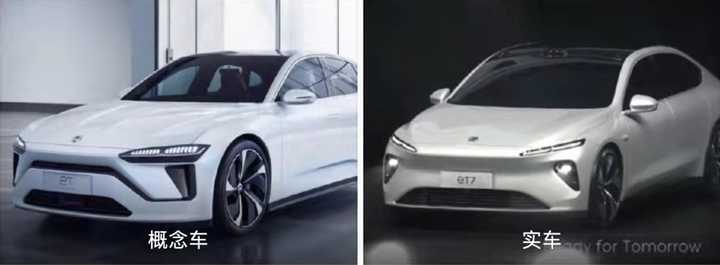
The front face of the actual car is more closed, and the position of the headlights has been moved to the lower sides, similar to the position of P7 headlights. The overall shape of the car has lost a lot of technological sense and high-end sense compared to the concept car, presenting a feeling of a large ordinary sedan.
Especially the upper part of the front face is similar to the front face of the Geely A under the Geely Auto which was launched before, it does not have the same recognition as the first-generation ES series, and the overall design of the car falls into the category of ordinary cars, and it is not as stunning as the original ES series at the first sight. However, different strokes for different folks, as long as you like it.
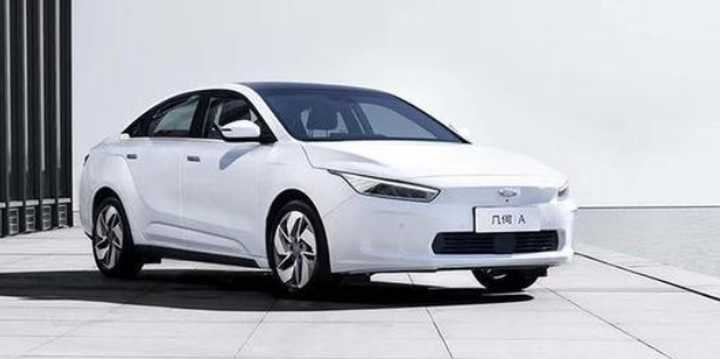
Simple and stylish interior design but lacking luxury
ET7 adopts a completely new interior design, and the overall feeling is that the best materials that can be used in the current market are used. Specific highlights are as follows:
- Double-layer glass insulation roof
- Hidden smart air vents
- Standard intelligent fragrance and air purification system
- Front and rear soundproof glass
- The entire series are equipped with seat heating, ventilation, massage, and both front and rear rows have them
- The entire series are equipped with HUD
- 12.8-inch central control screen, narrow border, 1720✖️1888 resolution
- NOMI, equipped with NPU core, adding voiceprint recognition
Among them, better glass, better central control screen, and better NOMI are all optimized on the original basis, and no revolutionary changes are shown. Especially, there is no introduction to the specific experience that can be achieved after the optimization.# ET7: A Strong Performer in the Flagship Sedan Category
The ET7, as a flagship sedan, boasts monster-level performance with a 4-wheel-drive 0-100km/h acceleration speed of 3.9 seconds and a braking distance of 33.5 meters. The 150-degree battery is capable of delivering more than 1000 km of range (based on NEDC standards).
However, there is a timing issue that needs attention. Like many new car makers, the ET7 is a pre-sale vehicle and delivery to ordinary consumers may take more than 15 months from today’s release. During this time frame, battery costs and range will continue to increase.
For example, at the end of 2018, a 300+ km range was the industry standard. By Q1 2020, that range had already increased to over 500 km, an increase of over 70%. However, the price increase was less than 30%.
Therefore, by the time the ET7 is delivered, there should already be similar vehicles with more than 1000+ km of range, such as Tesla’s new flagship sedan whose NEDC design range also exceeds 1000+.
As for the rest of the ET7’s highlights, they seem to involve minor improvements rather than major changes compared to NIO’s existing models. Although the interior design includes better materials and wood grain decorations with minimalist, luxury, and high-end elements, the current design is too similar to Tesla’s Model 3 in appearance.
However, NIO is not Tesla. Tesla has always advocated for extreme minimalism. In contrast, NIO has always sought to create a more luxurious brand image. The current interior design of the ET7 overlaps too much with the Model 3, causing the car’s style to become more minimalist and reducing the sense of luxury that NIO’s ES series has strived to create.## Lack of Innovation in Automated Driving
This is the most disappointing aspect of NIO’s product release for me. I thought the biggest advantage of my second-generation platform was to create a revolutionary automated driving experience in a completely new design.
However, it seems that ET7 has not demonstrated the revolutionary advantages of the second-generation driving platform so far. Personally, I feel that it just stacked all the top-level supplier hardware that can currently be purchased.

Simply put, the ET7’s automated driving hardware design is nothing more than a more powerful version of the XPeng P7, optimizing all the hardware of the P7 to the latest version, such as camera pixels. Tesla has 1.2 million, the XPeng P7 has 2 million, and the ET7 has 8 million. However, camera pixels are not the most profound factor in automated driving. More importantly, how to optimize algorithms to achieve better results.
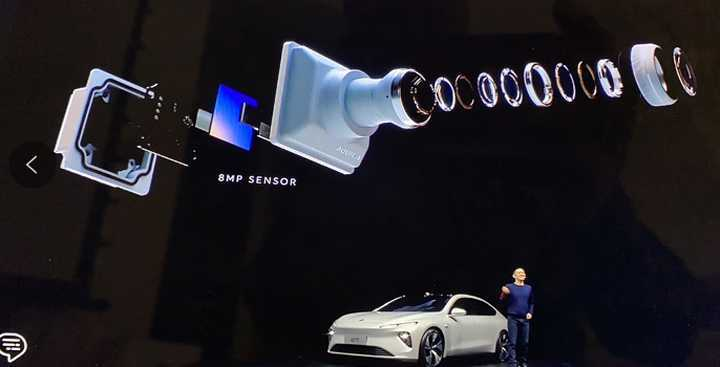
As for LiDAR, the ET7 also uses LiDAR as a supplement to visual judgment, still using a combined visual and LiDAR approach, fusing the information between the two for multiple verifications to achieve driving safety.
This is different from the self-driving taxis usually seen on the road. Those vehicles rely more on LiDAR to perceive the surrounding environment. However, ET7 and XPeng’s P5 both use a design that focuses on vision + redundancies with radar.
In this case, using better long-range solid-state LiDARs is of course not a problem, but whether it is the most appropriate choice is a matter of opinion. Moreover, the development of LiDAR is progressing rapidly, and it is unclear whether ET7 is well prepared for future upgrades.

Finally, let’s talk about the supercomputing platform. The ET7 uses Nvidia’s latest self-driving chip, and the four chips together have a total computing power of over 1000T. This is indeed a huge computing power because the 2 million pixel camera on the ET7 naturally produces a huge data flow. Without a self-driving chip with ultra-high computing power, it is almost impossible to apply such data information.Translate the Markdown text below to English Markdown text in a professional manner. Retain the HTML tag inside the Markdown and output the results.
However, in this super computing platform, only two out of the four chips are used for daily work, while another is responsible for personalized training and the remaining one serves as a redundant backup computing power. This means that the daily computing power is 500T.
Moreover, NIO has once again changed its supplier of autonomous driving chips. The initial announcement of partnering with Mobileye to directly enter L4 now seems to be a thing of the past. It is currently unknown how the algorithm self-research capability will progress under the new architecture. As for the specific capabilities of NAD, they have not yet been released. According to their claim of gradually going online after delivery in the first quarter of 2022, perhaps it will not have significant capabilities until 2023.
This, like the range above, involves unpredictability about the future. In 2023, it is foreseeable that Tesla FSD should have iterated to the next version and already be on the road. Meanwhile, XP3.5 from XPeng Motors should have realized all abilities and is expected to release XP4. The unpredictability lies in how explosive the development of autonomous driving technology will be, and how much progress will be made in vehicle-to-infrastructure (V2X) technology. There are too many uncertain factors involved.
- NIO’s supercomputing platform ADAM, the strongest mass-produced computing platform to date
- Equipped with 4 NVIDIA Orin chips, the world’s first mass-produced car with Orin
- Computing power of up to 1016 TOPS (7 times Tesla FSD)
- 33 perception hardware, 1016T computing power, 19 ADAS functions, standard across all models
- NAD full functionality, subscribe monthly, pay 680 yuan/month
The subscription-based functionality is indeed an excellent option for users. When the technology is not ready, users can choose not to subscribe and subscribe later when the technology matures.
Alternatively, users can drive their cars by themselves in normal times and choose to subscribe when they travel long distances. This flexible choice will be greatly appreciated by users.
Of course, the introduction of this policy shows that NIO is highly confident in its autonomous driving technology, and it is believed that most users will continue to need this technology in the future. Thus, continued subscription will generate a continuous cash flow. Moreover, this model is similar to BaaS, and in the future, it can achieve greater profits through price adjustments, leaving users no choice but to continue paying for the service supplier.

Price and other issues are not problematic
NIO’s brand positioning of a flagship-level sedan on a completely new platform at around 50 is not a problem. Some people say that sedans sell for more than SUVs. This is because they did not consider the reason behind ET7’s completely new platform.
The brand’s second-generation battery swap station and even I personally estimate that it will publish a new supercharging capability in the future, all based on the design of the new platform.
As a brand that challenges high-end sedans above 30, these are normal strategic choices for NIO. Moreover, with so many top-tier supplier configurations, the price is not particularly expensive.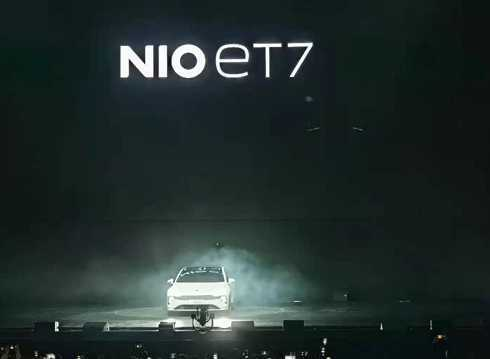
To sum up, ET7 is a car that utilizes extreme configurations in various levels. However, as a leading-edge intelligent vehicle on a completely new platform, it still lacks revolutionary innovations, particularly in terms of exterior and interior design as well as the concept of autonomous driving. Some may wonder what revolutionary innovation means, and the answer is quite simple: it is something that has not been thought of before.
For instance, before FSD, no one thought that vehicles could drive in urban areas on their own. Before the XPeng P5, nobody believed that a large-scale application of lidar was possible in vehicles, and before the FF91, no one thought that the driver’s cockpit could be so futuristic. These are called revolutionary innovations.
From NIO’s perspective, its battery swap technology and the NOP developed on the first-generation platform are revolutionary innovations.
Currently, it seems that ET7 mostly improves existing mature technologies to their extreme performance, such as upgrading Tesla’s cameras to the highest resolution, elevating their position, stacking more chips and increasing battery capacity. However, these improvements rely heavily on suppliers. As suppliers gradually increase their production, this advantage will soon be mastered by other manufacturers and possibly at lower costs.
Therefore, as a leading brand, NIO’s ET7, as a flagship product of the second-generation platform, disappoints me slightly in terms of its innovation.
This article is a translation by ChatGPT of a Chinese report from 42HOW. If you have any questions about it, please email bd@42how.com.
